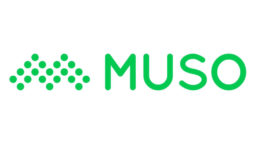The following MBW blog comes from Andy Chatterley, the CEO of UK-based MUSO, which monitors copyright piracy worldwide. In addition, MUSO assists clients with protecting releases from infringement, while also helping them use piracy-related data to boost their businesses. Here, Chatterley (pictured) presents some eyebrow-raising stats about copyright infringement in the post-Spotify era – and suggests that sections of the music industry might be missing out on the advantages such consumption could provide…
For over a decade now, I have been talking to people about digital piracy affecting myriad content industries, and none has been more affected than the recording industry.
After Napster and its like devastated incomes and normalized piracy, the advent of legal streaming sites like Spotify and Deezer appeared to solve the problem. Or did they?
There seems to be a commonly held misconception within the music industry circles that nobody pirates music anymore. Well, the data says otherwise. It’s possible that what people are really saying is that since they started using said legal streaming services, they stopped downloading music illegally.
Yet music piracy – like all digital piracy – has changed shape as technologies have developed.
Ten years ago, torrents were the mainstay but, as of August 2019, MUSO’s data shows that torrents now only account for just 6.7% of all music piracy worldwide. Meanwhile, unlicensed streaming makes up 33.6% and stream-ripping sites 31.3%. [These figures refer to the total number of music-related piracy visits MUSO saw within the month.]
“In just the single month of July 2019, Ed Sheeran album Divide had over 612K downloads on torrent sites.”
Still, despite torrenting representing only 6.7% of the market, exclusively looking more closely at music titles on torrent sites unearths some eye-watering numbers.
Sure, the latest Billie Eilish or Post Malone release would understandably see a spike in piracy levels in 2019, but what about older releases and back catalog?
In just the single month of July 2019, Ed Sheeran album Divide (originally released two years ago) had over 612K downloads, Kanye’s The Life of Pablo (2016) had 280k and Lady Gaga’s debut The Fame Monster (2009) had over 202k.
Three albums, picked at random, being illegally downloaded over a million times a month.
Based on a typical iTunes or Amazon download retail price, this represents approximately $10m of lost revenue for the music business and its retailers.
Again, just three albums, from torrents alone, picked at random, in a single month.
And if recent back catalogs are still being plundered on torrent sites, heritage acts are not immune, either. It might have been released way back in 1973, but Dark Side of the Moon is still a perennial favourite – to the tune of 131k illegal downloads in July on torrent services. And while Sir Paul McCartney is not exactly short of a few dollars, he probably still won’t be delighted to learn that Sgt. Pepper’s Lonely Hearts Club Band was downloaded over 182k times via torrents in the same 31 days.
It doesn’t take a forensic accountant to understand the scale of the related financial losses to rights owners, publishers and artists from this level of digital piracy. It has decimated the living of so many content creators and suppressed – if not directly reduced – wages in these sectors.
“Piracy has decimated the living of so many content creators and suppressed – if not directly reduced – wages in these sectors.”
One could argue that each illegal download is a sale lost, and moreover from an individual who has yet to subscribe to a paid streaming service. Without this subscription, digital revenue growth for the recording industry is hindered, and any real trickle down to creators negligible.
More established names can absorb these losses – but for many, it is making it nigh on impossible to survive making work that pays any kind of decent living.
So what can be done?
We can no longer just write off piracy as ‘breakage’. By understanding demand, data, trends and behaviours we can manage it effectively, and a actually use it to create real measurable value.
I’ve long argued that piracy is, by its very nature, a high-intent activity.
You don’t visit piracy sites to casually browse: you visit because you’re a fan and want a specific release or title. There is insight into geographic content trends and city-level demand; data that is of vital importance for marketing, touring and wider release strategies.
“there is an enormous opportunity in converting more people to paid subscribers. Piracy is an obvious place to find them.”
It’s also worth bearing in mind that as subscriptions to music services inevitably slow down – as we have started to see in Scandinavia – this too-long-ignored audience will become highly sought after. Here is an active music fan who may not already be subscribing to a streaming platform; that’s gold for digital advertisers and driving up paid subscriber numbers.
With approximately 3.5bn people connected to the internet globally, and only around 10% of them paying for subscriptions to music streaming services, there is an enormous opportunity in converting more people to paid subscribers. Piracy is an obvious place to find them.
Anti-piracy and content protection technologies are as crucial as they have ever been in stemming the illegal distribution of content but coupled with a data-led understanding of what, how and why people illegally download music they can garner significant insights and create value, growth and revenue.
What’s not to like?Music Business Worldwide



